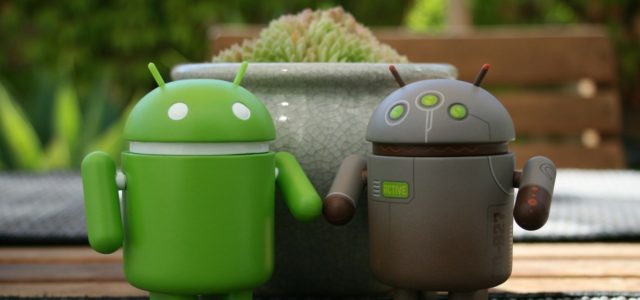Digital Meets 5G. The age of technology is way past its nascent stage and has grown exponentially during the last decade. In my role, travelling to events and meeting with thought leaders I am aware of the developments made across different technological fronts.
During these events I have had the opportunity to meet and greet some of the brightest marketing minds. One such person, who is playing an imperative role in ensuring the smooth run of things in both Ericsson and across the digital sphere, is Eva Hedfors.
Eva Hedfors the Head of Marketing and Communications at Ericsson Digital Services, is a leading driver in evolving the perception of Ericsson as a partner to operators transformation from Communication Service Providers to Digital Service providers. I had the opportunity to first meet Eva during Ericsson studio tour in Kista, Sweden. During our first meeting I could tell of her knowledgeable insights and the positive vision she had. Just recently I had the opportunity of interviewing her for a topic she will be presenting in a webinar on the 20th of June. The topic of the webinar – Digital Meets 5G; Shaping the CXO Agenda – is up for interpretation, and she did give me details regarding what she is expecting from the webinar, and how she plans to go about answering some of the questions in this regard.
What steps should be taken by CxO’s for a Smooth Transition to 5G?
Eva shared her insights on how CxOs could prepare for a smooth transition to Digital Service Providers powered by 5G.”The initial technology deployment will target the massive growth of video traffic in networks, but a leading and hard-to-crack requirement for all CxO’s is also to realize the industry potential and find new business growth through 5G. This involves to both innovate and participate in eco-systems, as well as to optimize the route for marketing such services. CxO’s can take advantage of 5G to address relatively new segments and industry use cases in mission critical IoT as well as Massive IoT.” Eva explained the business models one creates also needs to be up-to-date and should reflect what’s happening in the market. Since the plan is rather new, most companies and industries won’t know much about it. Hence, it is necessary that decision makers in Telcos to position their existing capabilities towards different industries and using Network Slicing is one way to do that already on 4G. To capture the potential, for many CxO’s means focus to create a revamped strategy for billing and charging systems into a Digital Business Support System (BSS). Moreover, a proper infrastructure needs to be provided to ensure that the end consumer gets to experience the technology in a seamless manner. This would help generate positive insights. 5G is here today, and action needs to start from right now!
How to Avoid the Challenges Involved in Digitization?
The first step to avoiding the challenges involved in digitization is to recognize the efforts most customers have to put in place when engaging with their Telco provider. Once these efforts have been quantified, Telcos can take the necessary action. For the customers, touch points should be made accessible, and there should be no hindrance in communication for B2C, B2B and B2B2C customers. Failure to put the right digital IT infrastructure in place, including analytics and Digital BSS, will limit the business potential of 5G. That is why it and Digitalization needs to be planned and executed not as individual technology transformation projects, but as one transformation that aligns towards the same overall business objective in each time frame. Moreover, the technology teams should be motivated to simplify the core network and make it programmable. Eva mentioned that it was imperative for organizations to start already now and simplify the journey from vEPC to 5G Core for proper implementation and monetization of these revamped services.
Research for 5G Readiness across Different Industries
When asked about the research done to analyze the readiness across different industries, Eva mentioned that Ericsson has done several reports on the potential of 5G across industries.
- The 5G business potential study by Ericsson analyzes the business opportunities that come from proper industrial digitalization. The report focuses on the opportunities for organizations present in 10 of the major industries including, Manufacturing, Energy and Utilities, Automotive, Public Safety, Media and Entertainment, Healthcare, Financial Services, Public Transport, Agriculture and Retail. There are detailed use cases for these industries present in the research, which may help stakeholders in these industries to make a decision regarding usage.
- Another research based study released by Ericsson in this regard is the guide to capturing 5G-IoT Business Potential. The study answers questions pertaining to the selection of industries and what use cases to address. The insights have been collected from over 200 5G use cases that illustrate how operators can start their IoT business now through the use of 5G.
How Can 5G Technology Improve the Customer Experience Offered to existing Customers by Service Providers?
Enhanced Mobile Broadband is one of the major benefits of 5G technology, according to Eva, and it will help service providers enhance the experience they offer to their customers, who continue to increase consuming video on mobile devises . Better performance, reliability and ultra-high speed are some of the examples of the broadening consumer experience that can be provided through the 5G experience. According to a recent ConsumerLab report conducted by Ericsson, more than 70 percent of all consumers identify performance as one of the major expectations they are looking forward to from 5G.
What are the Preparations and Biggest Challenges for 5G Readiness?
Through our industry partnerships we do know, many organizations across many industries have started to analyze how 5G will help drive their digital transformation. 5G business models are being crafted to ensure that the implementation is as smooth as possible. The biggest challenge to capturing the market potential for all actors in the industrial eco-systems, including telecom operators, is the investment in technology and business development. Business development will fall along the lines of organizational adaptation, and Eva believes that a proper infrastructure needs to be provided. It is necessary that 5G be provided the right infrastructure for industry wide implementation. Only organizations that have created the right structure and the model required for 5G implementation are ready for the technology. Without organization-wide infrastructure, 5G would be just like a car running without roads and filling stations.
Integrating 5G Technology across Infrastructure
Like we have talked about above, decision makers need to realize the importance of a proper automated structure that spans across all touch points to ensure that there is no hindrance to 5G services adoption. To that end, organizations also need to realize the importance of an architecture evolution strategy. The evolution strategy should seamlessly integrate 5G across the infrastructure and ensure the full flexibility in the handling of billing, charging and customer interaction.
Both IoT and 5G technologies are shaping the digital transformation and transforming all digital architecture by helping organizations evolve their services and infrastructure. 5G particularly brings a new level of characteristics and performance to the mix, which will play an important role in the digitalization of numerous industries. Telecom operators leveraging the power of 5G technologies can gain from financial benefits as well, as a USD 619 billion revenue opportunity has been predicted for these operators in the future. This revenue opportunity is real and up for grabs by operators, but it does require business model development that elevates telecom operators beyond the connectivity play.
Article by channel:
Everything you need to know about Digital Transformation
The best articles, news and events direct to your inbox
Read more articles tagged: Featured, Internet of Things, Mobile







